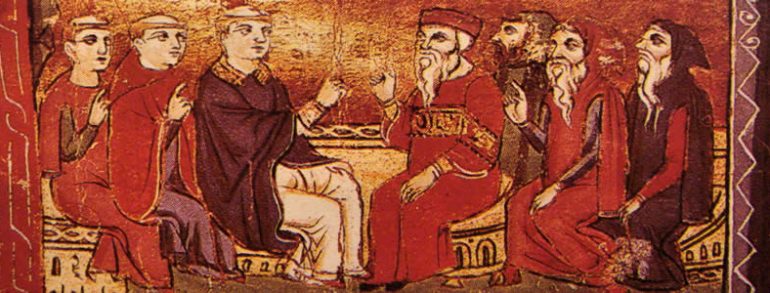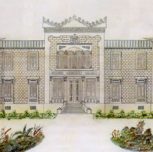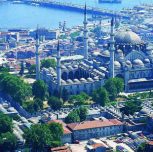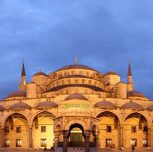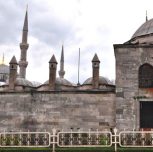Geographical, cultural, linguistic and political conditions created severe disagreements or divisions, called schism, between the east and the west, or even within the west and the east as time passed. In 1054, the Great Schism, also called the East–West Schism, created centuries-long separation between the Eastern and the Western branches of Christianity. The Great Schism led to the development of the modern Roman Catholic and Eastern Orthodox churches.
A Bull of Excommunication on the Altar
The great church of Hagia Sophia witnessed in 1054 an unexpected bull of excommunication on the altar. This event marked the beginning of the centuries-long separation between the Western (Latin Rome) and the Eastern (Greek Constantinople) branches of Christianity. It is also called the “East-West Schism”. Both sides were militarily weakened by this schism.
Leo IX (1049-1054), one of the German reformer-popes, asked for Constantinople’s help against both those who were against the papal reform and the Normans in Southern Italy. As it coincided with the Norman conquest of Byzantine. Constantine IX Monomachos (1042-1055) was willing to form an alliance with Rome. Leo appointed Humbert, Cardinal of Silva Candida, to lead the mission.
Humbert was biased against the Greek Church, and hated Michael Cerularius, patriarch of Constantinople. Humbert was accepted by the Emperor, but he did not treat the patriarch well. On the other hand, feelings were mutual; Humbert was not well received by Cerularius either, as he was against any alliance with the papacy.
After months of discussions, angry Humbert went into the great church of Hagia Sophia and left a bull of excommunication on the altar. Cerularius retaliated by convening his churchmen and condemning the papal legates. Eventually, Rome failed to get any help from Constantinople, and the pope had to accept Norman rule in southern Italy.
The Great Western Schism: 1378-1418
The Western Schism, lasting from 1378 to 1418, was a separation within the Roman Catholic Church. There were three rival popes, each with his own following, and administrative offices. This is also called the Great Papal Schism.
Andrew Louth, (2008) “The emergence of Byzantine Orthodoxy, 600–1095, Early Medieval Christianity 600-1100”, Volume.3, the University Press, Cambridge, UK, p.46-64
Tia M. Kolbaba, (2008), “Latin and Greek Christians, Early Medieval Christianity 600-1100”, Volume.3, the University Press, Cambridge, UK, pp.213-229
http://www.britannica.com/EBchecked/topic/640848/Western-Schism


